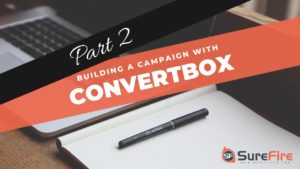The Internet is now in the palms of millions upon millions of users. But which has the most searches, the mobile website or the desktop and what will happen with Google’s Decision to do Mobile First indexing.
If Darwin is right, my guess is soon humans will be born with mobile devices as part of their DNA. That is how monumentally and fundamentally the mobile device has changed the world. Google knows this and has begun to address the increased use of mobile devices by introducing mobile-first indexing. This action acknowledges that computing, in general, has moved off the desk for many people. The whole world, a quick look around you can confirm, is now on the phone.
Now What? Is It Going to Be Mobile First Indexing All the Way
It happens to all of us. The problem is that you bring up a webpage on your phone, only to find that a feature you use on the desktop version is not available on the phone. This can be frustrating, especially for website owners and developers. It is a challenge to simplify and condense website features for mobile screens without needing to strip certain features and content that tends to clutter up this smaller view. In the worst cases, we reserve some features for desktop environments.
As an example let’s use my own website Surefire Web Services. I do have a cost to my link graph as parts of the desktop features are skimmed down for mobile.
My website drops about 10 links when the mobile version is accessed. So what will happen with this problem when mobile versions of websites become a primary way of accessing the web.
Google’s announcement to proceed with a mobile-first index raises new questions about how the link structure of the web as a whole might be influenced once these truncated web experiences become the first (and sometimes only) version of the web Googlebot encounters.
Obviously, the rush is going to be to design, if not exclusively, then primarily, for mobile devices. Problem solved? Not really because there are many more URL’s, Domains, Links and Root Linking domains that are entirely unique to desktops, and in fact, many of the features you have come to know and love are not available on mobile devices. On top of that, the need to condense, simplify and strip out content to accommodate the small size often causes website owners users to opt out of certain links and content. This can be a problem because of the lost links, a key factor that Google uses for search engine ranking. Something you simply don’t want to happen.
What Keeps Google Engineers Up at Night?
The dilemma is that mobile-first sites have to remove content in order to accommodate the smaller screen. That alters the link structure and may impact one of the primary factors in Google rankings.
The insomnia results from really not knowing how much content the search engines can crawl on both mobile and desktop. To address this, the thinking may be for Google to offer mobile-first websites, creating an identical codebase for both mobile and desktops. However, this is still an unknown factor at the moment, so we believe it’s best to prepare for the worst-case scenario. You need to get ahead of the curve, especially if Google decides to go all the way to mobile-only.
What Will Happen to Your Content?
Although Google is thinking of going Mobile-first, this does not mean the desktop search engine is going to disappear. Not any time soon anyway, they are just shifting emphasis and making more of an effort to improve mobile searches, especially because we now know that the majority of searches are conducted on mobiles.
So What Should You Do?
Yes, you should focus on getting your website to be mobile friendly, and make sure that the content is well-designed and easily viewable on mobile devices, even if it means dropping some of the content that is available on desktops. Google does emphasize that a well-designed desktop website is much better than a site that is broken or incomplete in its mobile version. Ultimately, the best idea is to have a website designed with relevant content, and in an attractive way for both desktop and mobile devices. And in the design process, you want to ask your developer to try to keep links within content that is viewable on both types of devices (desktops and mobiles).
Still, the most important rule to follow. Good is good. External links embedded in the content do better as they are seen on both types of devices. External links in sidebars did not make it in the index. Users tended to click on links that are on both desktops and mobiles. Good, content-rich sites perform better.
One or The Other
I believe function should follow form. If you need a vast amount of data to be shared and you want to go to mobile, decide what you can give up. If you can’t give up enough to make it work, work both sides with a desktop and a mobile application that will compress data to fit.
Pictures thanks to Freepik




